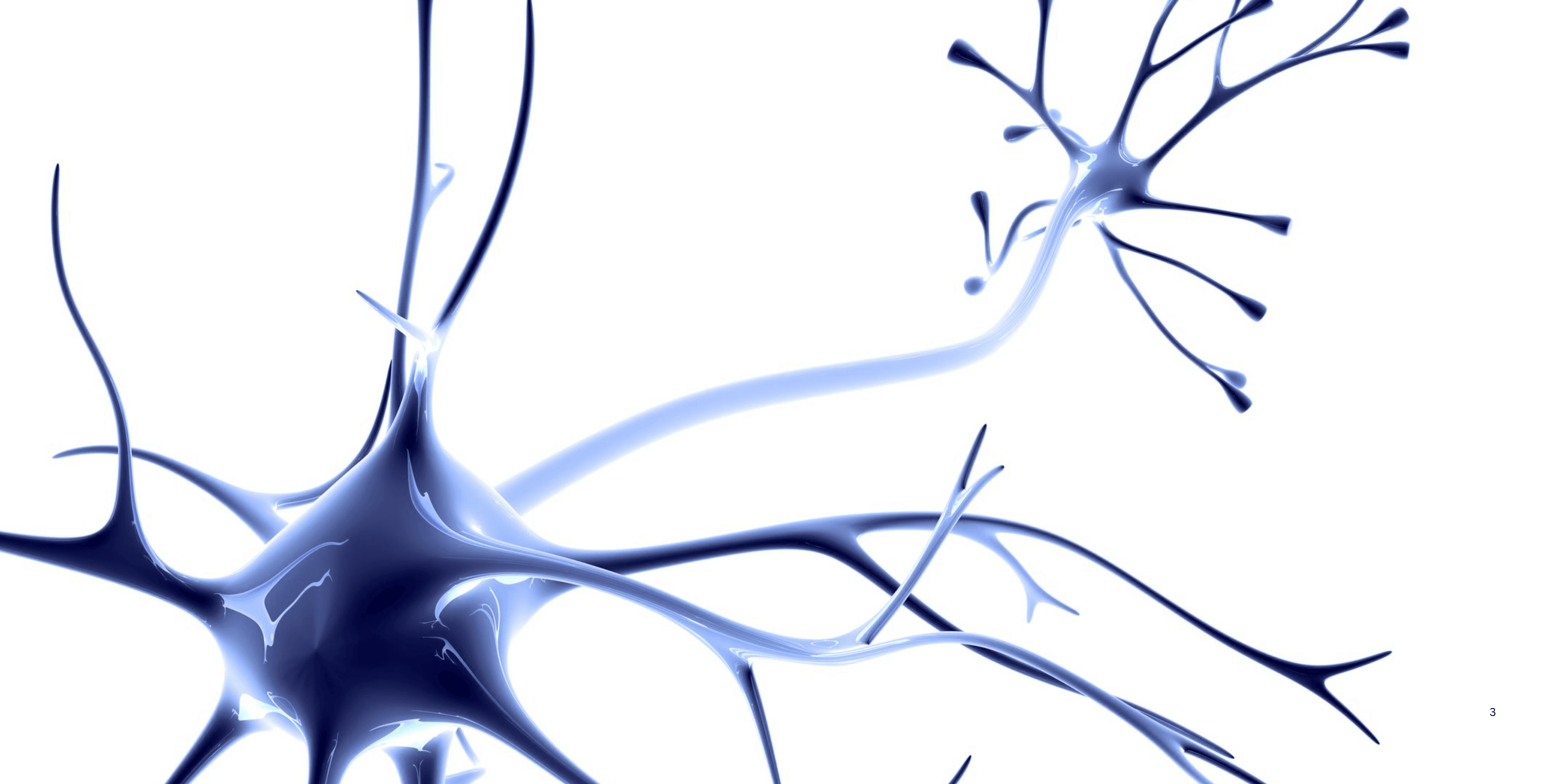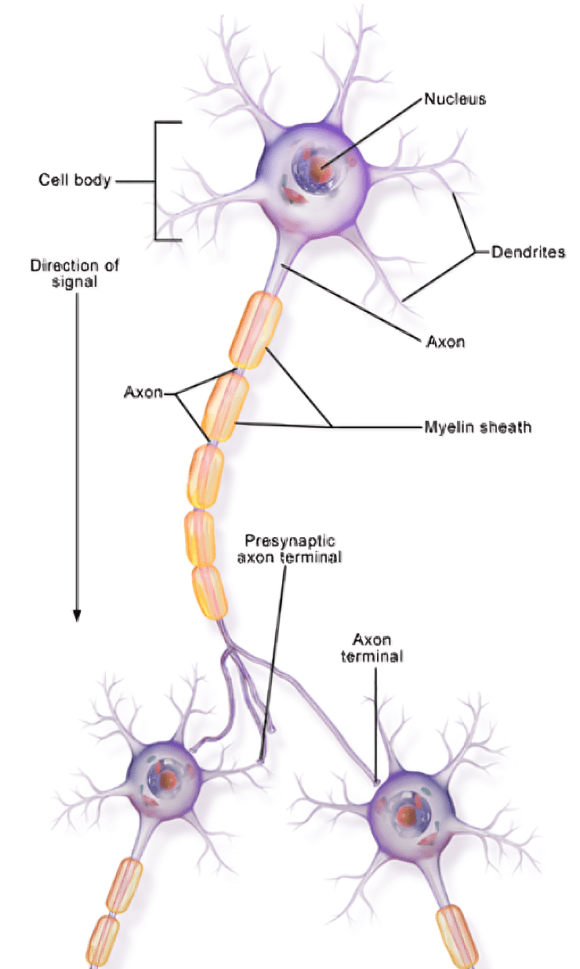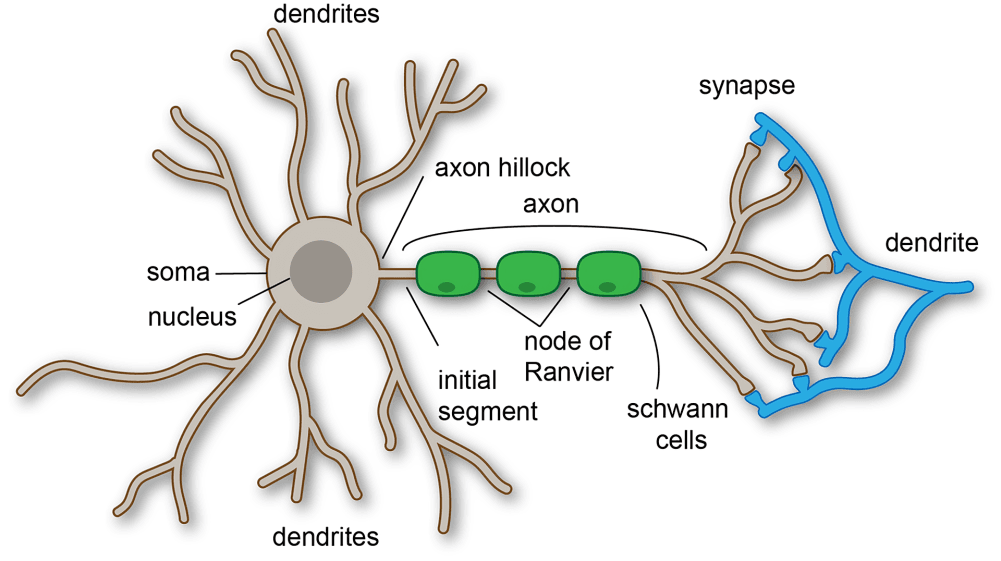
“
The structure of a nerve cell—or neuron—is remarkably specialized to support the transmission of electrical signals throughout the body. Composed of distinct regions like dendrites, the cell body, axons, and synaptic terminals, each part plays a crucial role in how the nervous system communicates.1
”
Santiago Ramón y Cajal discovered that nerve cells communicate through synapses, not direct contact, changing how we understand neuron signal transmission. 1
A nerve cell has dendrites that act like branches, receiving messages from other neurons. These structures increase surface area, allowing each neuron to gather signals from multiple sources at once. 2

Axons are often coated in a fatty layer called the myelin sheath, which insulates the nerve fiber. This sheath speeds up the electrical signal, ensuring rapid communication across distances.
The nodes of Ranvier are tiny gaps in the myelin sheath. These gaps allow the nerve impulse to jump from node to node, a process that dramatically increases the speed of signal transmission. 3
At the end of the axon are synaptic terminals. These terminals release neurotransmitters into the synapse, a small gap between neurons, to transmit messages to the next cell in the chain. 4
The structure of a nerve cell is highly polarized, meaning signals flow in one direction—from dendrites, through the soma and axon, to the synapse. This one-way flow maintains orderly communication.5
Each nerve cell connects to thousands of others, forming intricate circuits. These circuits allow complex processing of information, from reflex arcs to higher cognitive functions like language and memory. 6
Sensory neurons have specialized dendritic endings that respond to specific stimuli—light, heat, pressure, or chemicals—turning physical sensations into electrical impulses that travel to the brain. 7
Motor neurons have axons that connect directly to muscles. Their structure allows them to carry signals from the spinal cord to muscle fibers, triggering contraction and generating movement. 8

Interneurons are the most abundant type of nerve cells in the central nervous system. Their compact structure connects neurons to each other, facilitating communication within the spinal cord and brain.
The cytoskeleton within the nerve cell helps maintain its elongated structure. It provides scaffolding for the transport of nutrients and neurotransmitters along the axon and dendrites. 9
Nissl bodies in the soma are clusters of rough endoplasmic reticulum. These structures are essential for protein synthesis, enabling the neuron to produce enzymes and neurotransmitters continuously. 10
Axonal transport is vital for neuron survival. Specialized proteins carry molecules from the soma to the axon terminals and back again, using the cytoskeleton as a highway system. 11
Some axons, like those in the sciatic nerve, are among the longest cells in the human body. Their length demands efficient communication and energy use for effective signal transmission. 12
Glial cells, though not part of the nerve cell itself, support its structure. They produce myelin, remove waste, and help maintain the environment necessary for optimal neuronal function. 13

Dendritic spines are tiny protrusions on dendrites where synapses form. These structures can change shape and number, playing a role in learning, memory, and adaptability of the nervous system.
Neurons do not divide like other cells. Their structure is designed for longevity and stability. Damage to these cells is often permanent, especially in the central nervous system. 14
Unipolar, bipolar, and multipolar are structural classifications of neurons based on how many extensions arise from the cell body. This variety supports the different functions nerve cells perform. 15
Some neurons release inhibitory neurotransmitters like GABA, which prevent overexcitement in the brain. Their structure includes specialized vesicles that store and release these calming chemicals. 16
The synaptic cleft, a minuscule space between neurons, is crossed by neurotransmitters released from vesicles in the presynaptic terminal—completing the final step in the neuron’s signaling journey. 17


